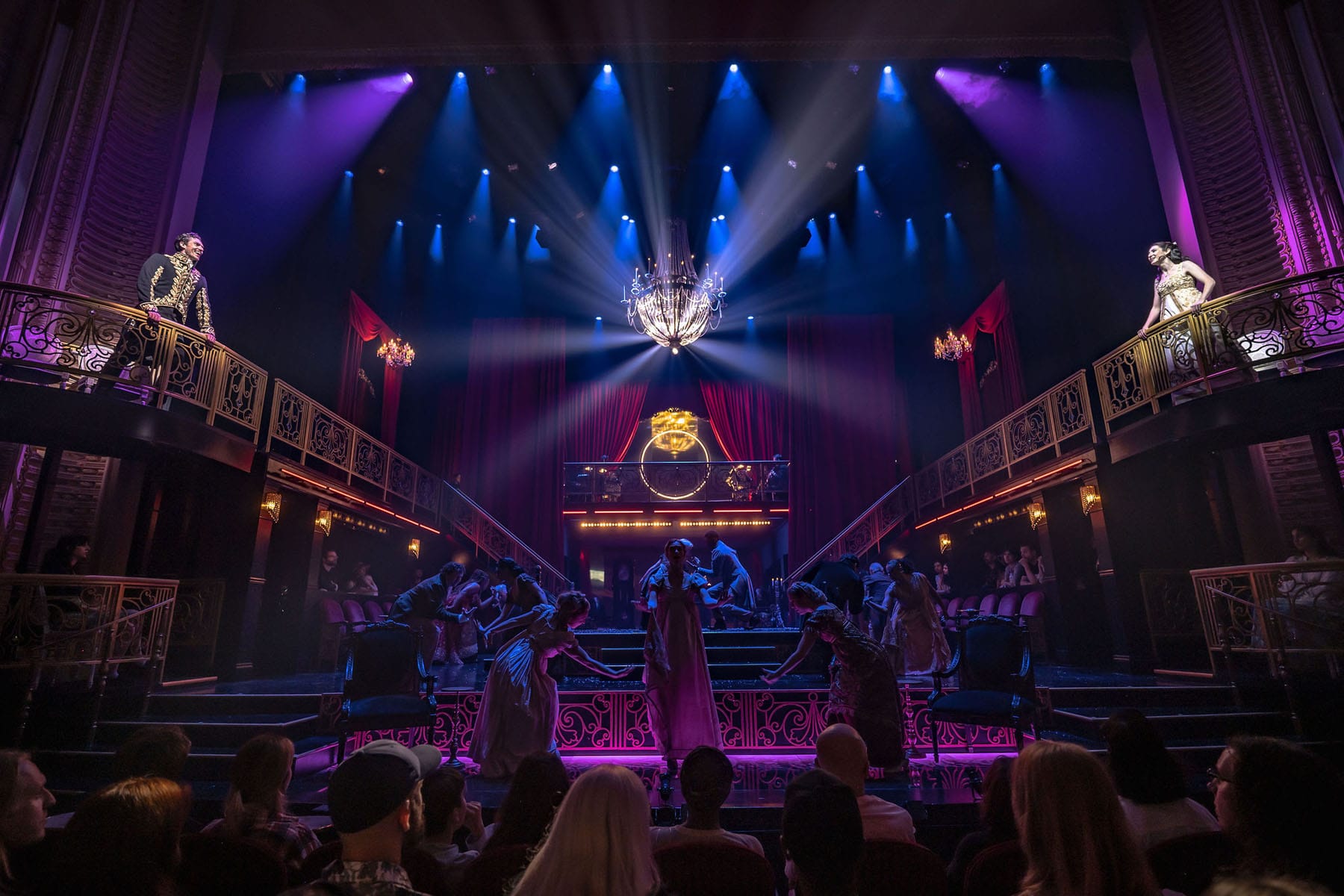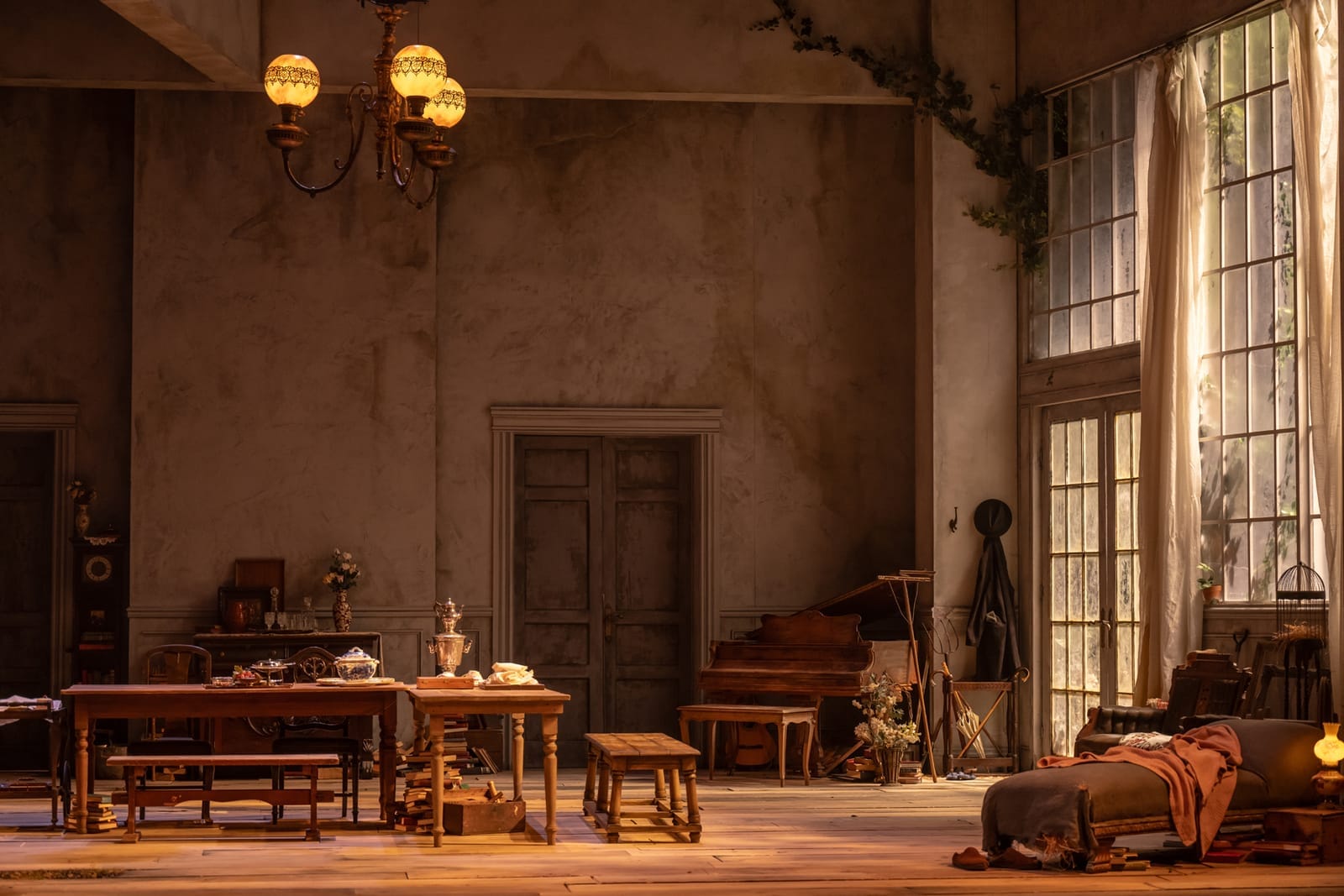Setting the stage for great theatre
Set designers Julie Fox, Joshua Quinlan and Tim Hatley discuss transferring shows to bigger houses, West End vs. Broadway costs and the ubiquitous use of video projections

I don’t often get to talk with theatre designers. If I interview anyone involved in a show, it’s usually the writer, director or one or two of the actors.
But last month, thanks to two freelance pieces for the Toronto Star, I got to chat with three acclaimed designers.
First came my interview with Julie Fox and Joshua Quinlan, the co-set designers of Natasha, Pierre & the Great Comet of 1812. The pair, frequent collaborators, won Dora Awards for the show’s original run at Crow’s Theatre, and I wanted to hear about how they moved that beloved production to a venue more than five times its capacity (Mirvish’s grand Royal Alexandra Theatre).
Then I got to chat with Tim Hatley, the multiple Tony Award and Olivier Award-winning set designer of, among other shows, Life of Pi, the recent revival of Starlight Express and Back to the Future: The Musical. He helped design the latter show’s DeLorean, which has been getting better reviews than anything else in the musical.
Because of the limitations of journalism, I didn’t get to include all the intriguing quotes from those interviews. So here, for paid-tier members, are some things that didn’t quite fit into those pieces. (You can upgrade your membership for as little as $7 per month; just click on the button below.)
Natasha, Pierre & the Great Comet of 1812 co-set designers Julie Fox and Joshua Quinlan

You’ve worked together frequently, including on Crow’s Theatre’s Uncle Vanya, which transferred from the in-the-round staging at the Guloien (which won you a Dora Award) to the proscenium at the CAA Theatre. How do you split things up when working?
Julie Fox: We’d worked together for years at Stratford, and so we already had a history, a shared vocabulary and, I guess, a common approach to building a vision for a play’s scenography. We both have our separate strengths, and it feels pretty seamless.
Joshua Quinlan: It’s a nice balance, and being able to be in two places at once is always super helpful.
Fox: Natasha, Pierre & the Great Comet of 1812 is a big show, so it’s almost like we’ve cloned each other to work at different places.
Julie, you altered the set of Fifteen Dogs for transfers to Theatre Aquarius (in Hamilton) and for the CAA, and Joshua, you took The Master Plan from Crow’s to Hamilton and then Soulpepper. Are there tricks or techniques you use when you transfer something from one space to another?
Fox: I always begin with the question: What is this theatre? That’s the given circumstance for designers. What is the architecture of a space? And so you take your original concept and spend lots of time in the new space to understand how a play can live there in the best way. You have to exploit all the good things about a particular theatre.
